Literature, Religion, Economic Conditions & Culture: The Vedic Period | History for UPSC CSE PDF Download
Literature
- Veda means knowledge, comes from the root vid (to know). They are given the titles of Apaurusheja (not made by man) and Nitya (eternal).
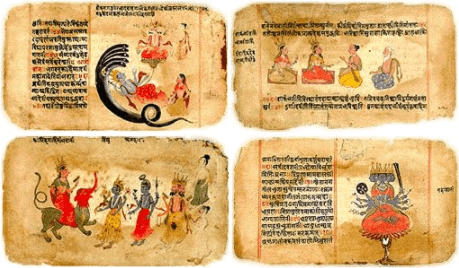 Literature - Vedic Period
Literature - Vedic Period - The Veda consists of four different classes of literary composition, namely Mantras, Brahmanas, Aranyakas and Upnishads.
- Mantras: (saying, song, formula) consists of the oldest division of Vedic literature and is distributed in four samhitas (or collection); Rig Veda Samhita, Sam Veda Samhita Yajur Veda, Samhita and Athrva Veda Samhita. The first three are known as Trayi (three fold knowledge).
- Samhita of Rig Veda is a collection of lyrics in praise of different gods. These were recited by the priest styled Hotri. It contains 1028 hymns, divided into 10 mandalas and some times into 8 astakas. But the former division is more popular. II-VII mandalas are the earliest and are also called family books. They are attributed to Gritsamada, Visvamitra, Vasudev, Attri, Bhardwaj and Vashistha. Mandala VIII is attributed to Kanva and Angiras. Mandala IX is attributed to Soma.
- It gives us an insight into the political, social, economic and religious life of the people of Rig Vedic India.
- Samhita of Sam Veda - (books of chants) - All of its verses except 75 being taken directly from Rig-veda. These verses are given tune for the purpose of singing. Its songs were meant to be sung at some sacrifice by a special class of priests called Udgatri. It shows that Aryans loved music and were not marely puritans.
- Samhita of Yajur Veda (book of sacrificial prayers) - It deals with the procedure for the performance of sacrifices. It contains rituals as well as hymns. Recited by Advaryu.
- It can be divided into two parts:
- (a) Shyama Yajur Veda (Black Yajur Veda) - It is older and contains commentary in prose in addition to the text.
- (b) Sukla Yajur Veda (White Yajur Veda)- It contains instructions only.
- Samhita of Athrva Veda (book of magical formula) also known as non-Aryan work some of its hymns are as old as the earliest hymns of Rig-veda. From the historical and scientific point of view resembles the Rig Veda, however its spirit is different. It is divided into 20 books.
(1) Upanishads - It is a collection of songs, spells and incantations for the cure of disease, the restoration of harmony and the exorcism of evil spirit etc.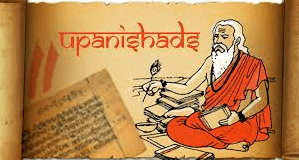 Upanishads
Upanishads
- The Aitareya and Kaushitaki Upanishads belong to Rig Veda.
- Chandogya and Kena Upanishad belong to Sama Veda
- Taittiriya, Katha and Svetasvata belong to the Krishna Yajur Veda.
- Brihadaanyaka and Isa belong to the skla Yajur Veda
- Prasna, Mundaka and Mundukya belong to the Atharva Veda.
(2) Brahmanas- They marked the transition from the Vedic to later Brahmanical social order.
 Brahmanas
Brahmanas
- They explain meaning of sacrifices and also the methods of performing them.
- They are commentries on various hymns of the Vedas to which they are appended.
- Each Brahmana is connected with one of the Samhitas.
- The three Brahmanas contain a lot of information about the non-Aryans and also tell us the methods by which the non-Aryans were to be admitted into the Aryan fold.
- To Rig Veda - Aitareya Brahmana and Kaushtaki Brahmana.
- To Sama Veda - Tandya-maha Brahmana, Sadvinsa Brahmana, Jaiminiya Brahmana.
- To Yajur Veda - Satapatha Brahmana; most exhaustive and most impotant of all the Brahmanas; points out the progress of culture from Panchala to Videha.
- To Atharva Veda - Gopatha Brahmana
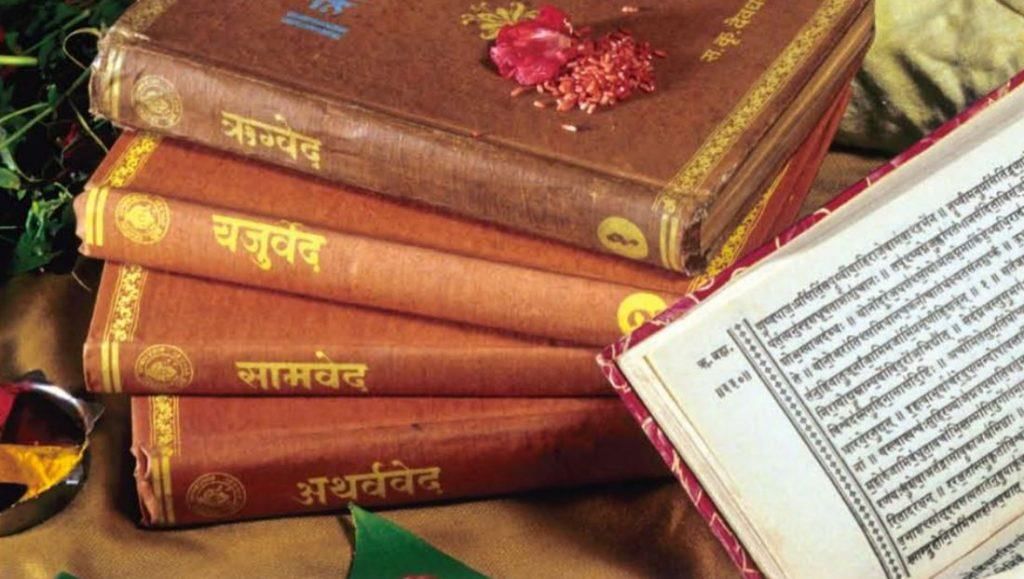 Four Vedas
Four Vedas
- The difference between the Brahmanas connected with the various Vedas lies in the fact that the Brahmanas of the respective Vedas deals with the work of different priests.
- As regards their fundamentals all the Brahmanas agree with one another to a very great extent.
- Aranyakas (forest book) -These are the books of instructions to be given in the forest meant for wood dwelling hermits.
- They are found as appendices to the Brahmanas.
- It marks the transition from ritualistic to philosophical thought.
- Upanishads (secret or esoteric doctrine) - Its name is derived from UPANISAD i.e “to sit near some one”. - There are 108 Upnishads altogether. - They contain deep speculations of a philosophical character which revolve around the two concepts of Brahma and Atma.
Comparison between Dravidian and Aryan Culture
- The Dravidians did not initiate and practise a social theory like Aryan theory of varnashrama—Brahmanas, Kshtriyas, Vaishyas and Shudras.
- The caste-system, the very framework of the Aryan society, was conspicuous by its absence in the Dravidian society.
- The Dravidian laws of matrimonial alliances differed fundamentally from those of the Aryans. The Dravidians could marry within the fold of their blood relations, while the Aryans were denied this privilege.
- The social system of Dravidians, being matriarchal, was quite in contradiction to the patriarchal system of the Aryans.
- Their mode of life, customs, manners, religion and languages differed from those of the Aryans.
Culture Important Rituals
- Rajasuya: The king’s influence was strengthened by rituals. He performed this sacrifice, which was supposed to confer supreme power on him.
- Asvamedha: A king performed the Asvamedha, which meant unquestioned control over an area in which the royal horse ran uninterrupted.
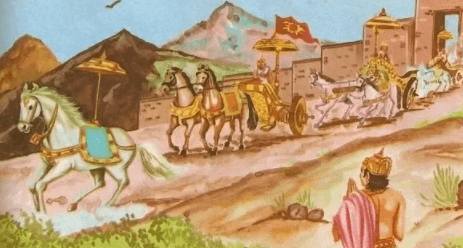 Asvamedha Ritual
Asvamedha Ritual
- Vajapeya: A king performed the Vajapeya or the chariot race, in which the royal chariot was made to win the race against his kinsmen.
Chief Priests
The four chief priests who were engaged in performing the Shrauta sacrifiices were called Hotri, the invoker, Adhvaryu, the executor of the sacrifice, Udgatri, the singer, and Brahman, the high priest.
- Hotri: They recited Rig Samhita.
- Udgatri: They chanted the songs of Sama Samhita at the Soma sacrifice.
- Adhvaryu: Formulae of Yajur Samhita were to be uttered by the Adhvaryu priests who performed the manual work involved in a sacrifice.
Types of Marriage
(i) Brahma: Marriage of a duly dowered girl to a man of the same class.
(ii) Daiva: In this type of marriage, the father gives a daughter to a sacrificial priest as part of his fee.
(iii) Arsa: In this type of marriage, a token bride-price of a cow and a bull is given in place of the dowry.
(iv) Prajapatya: The father gives the girl without dowry and without demanding the bride-price.
(v) Gandharva: Marriage by the consent of the two parties, which might be solemnized merely by plighting troth.
(vi) Asrua: Asura marriage, in which the bride was bought from her father, was looked upon with disfavour by all the sacred texts, though the Arishashastra allows it without criticism.
(vii) Rakshasa: Rakshasamarriage, or marriage by capture, was practised especially by warriors.
(viii) Paishacha: It was the seduction of girl while asleep, mentally deranged or drunk Of these eight forms the first four were generally approved and were permissible to brahmans. The other forms were looked on with varying degrees of disfavours by the pious. Gandharva marriage, which often might amount to no more than a liaison, was surprisingly respected. A special form of the gandharva marriage was the Swaymvar or “self-choice”.
Philosophical Systems
A large number of school of thought was prevalent in ancient times, but we know nine of them as the most important and influential.

They are the Charvaka, Jaina, Buddha, Vaisheshika, Nyaya, Sankhya, Yoga, Mimansa and Vedanta. They fall into two groups, Astika and Nastika, the former believing in the authority of the Vedas and the latter discarding it. The first three systems are Nastika and all others are Astika. Jaina and Buddha schools of philosophy will be dealt with separately.
ReligionRig Vedic Period
- Naturalism and Anthropomorphism—personification.
- Polytheism and Henotheism or Kathenotheism—many gods were worshipped and headed towards Monotheism.
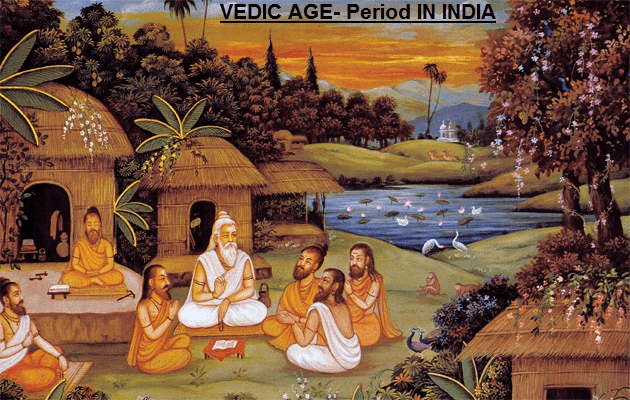
- No idolatrous
- The monotheistic conception appears more prominently in the hymns addressed to Hiranyagarbha (the germ of gold) and to Vishvakarman (the all creating).
- The idea of metempsychosis (transmigration of soul) is not developed during the Rigvedic period.
Later Vedic Period
- Indra and Agni lost their importance.
- Prajapati (the creator) became the supreme.
- The religion in the later Vedic period is distinguishable from the earlier Rig Vedic civilization in the sense that new Gods and Goddesses came to be worshipped.
- The great gods of the Rig Vedic period like Indra, Varuna, Surya etc., receded in the background and many gods like Vishnu, Rudra etc. come into prominence.
- ‘Pushan’ was regarded as the God of Sudras.
- The people also worshipped the snake.
- They had faith in witch-craft, charms, spells and spirits.
- People had faith in doctrine of self, karma, maya, mukti and transmigration of soul.
- Asceticism challenged the supremacy of vedic sacrifices.
Economic Conditions
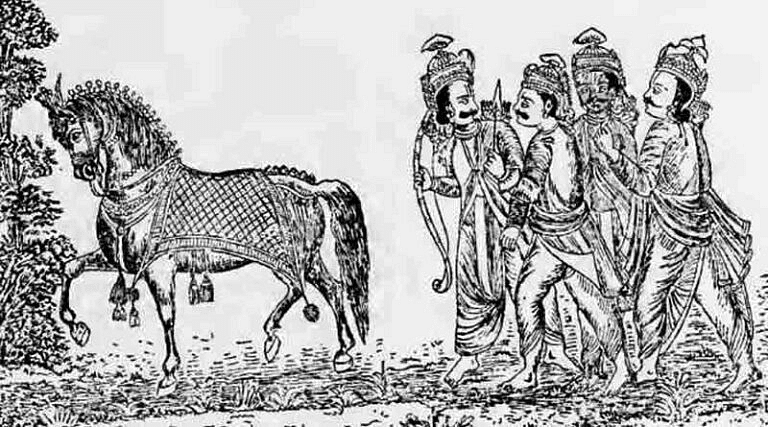 Economic Condition During Vedic Period
Economic Condition During Vedic Period
Rig Vedic Period
- Pastoral economy
- Plough agriculture made the food supply more regular.
- They had certain technological knowledge about seasons connected with agriculture.
- The chief industries referred to in the Rig Veda are those of the carpenters, the chariot makers, the weavers, the leather-workers, the potter, etc.
Later Vedic Period
- Iron was used by these people for making implements.
- In addition to irrigation, which was known in Rig Veda, the use of manure is referred to several times.
- In place of yava (possibly barley) in the Rig Veda, many kinds of grains are mentioned.
- For the first time the Vedic people came to be acquainted with rice in the doab. It is called vrihi in the Vedic texts, and its remains recovered from Hastinapur belong to eight century B.C.
- The seasons of the different grains are briefly summed up in the Taittiriya Samhita.
|
216 videos|855 docs|219 tests
|
FAQs on Literature, Religion, Economic Conditions & Culture: The Vedic Period - History for UPSC CSE
| 1. What are the key differences between Dravidian and Aryan culture in terms of literature, religion, and economic conditions? |  |
| 2. How did literature play a role in shaping Dravidian and Aryan cultures during the Vedic period? |  |
| 3. What were the main religious practices and beliefs of Dravidian and Aryan cultures during the Vedic period? |  |
| 4. How did economic conditions differ between Dravidian and Aryan cultures during the Vedic period? |  |
| 5. How did the cultural interactions between Dravidian and Aryan societies influence each other during the Vedic period? |  |

















